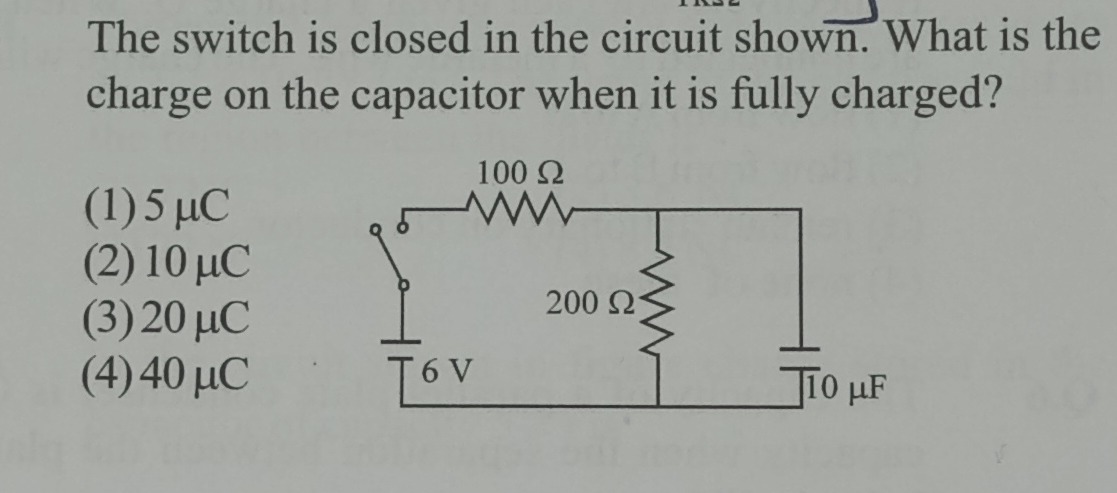Question
Question: The switch is closed in the circuit shown. What is the charge on the capacitor when it is fully char...
The switch is closed in the circuit shown. What is the charge on the capacitor when it is fully charged?

5 μC
10 μC
20 μC
40 μC
40 μC
Solution
When the switch is closed and the capacitor is fully charged, the circuit reaches a steady state. In the steady state, the current through the capacitor is zero, as a capacitor behaves like an open circuit in DC steady state.
In this circuit, the 10 μF capacitor is in parallel with the 200 Ω resistor. When the capacitor is fully charged, no current flows through the capacitor branch. The current from the 6V battery flows through the 100 Ω resistor and then through the 200 Ω resistor. Thus, the 100 Ω and 200 Ω resistors are effectively in series in the current path.
The total resistance in the circuit through which current flows is the sum of the resistances in series:
Rtotal=R1+R2=100Ω+200Ω=300Ω.
The total voltage supplied by the battery is V=6V. The current flowing through the resistors in the steady state is given by Ohm's law:
I=RtotalV=300Ω6V=0.02A.
The voltage across the 200 Ω resistor is the product of the current flowing through it and its resistance:
V200Ω=I×R2=0.02A×200Ω=4V.
Since the capacitor is connected in parallel with the 200 Ω resistor, the voltage across the capacitor when it is fully charged is equal to the voltage across the 200 Ω resistor:
VC=V200Ω=4V.
The charge on the capacitor is given by the formula Q=C×VC, where C is the capacitance and VC is the voltage across the capacitor. The capacitance is given as C=10μF=10×10−6F. The voltage across the capacitor is VC=4V.
Therefore, the charge on the capacitor when it is fully charged is:
Q=C×VC=(10×10−6F)×(4V)=40×10−6C=40μC.
